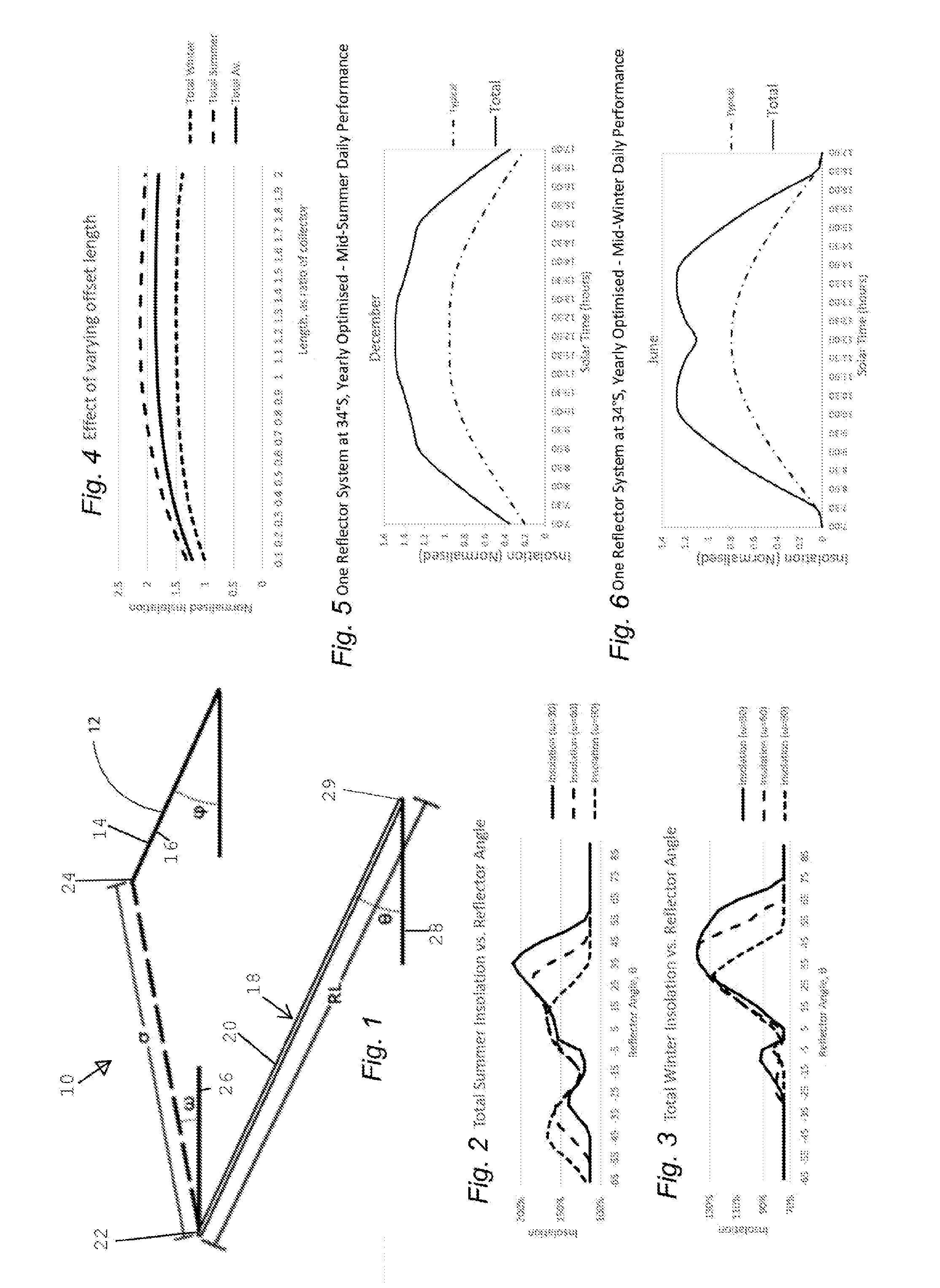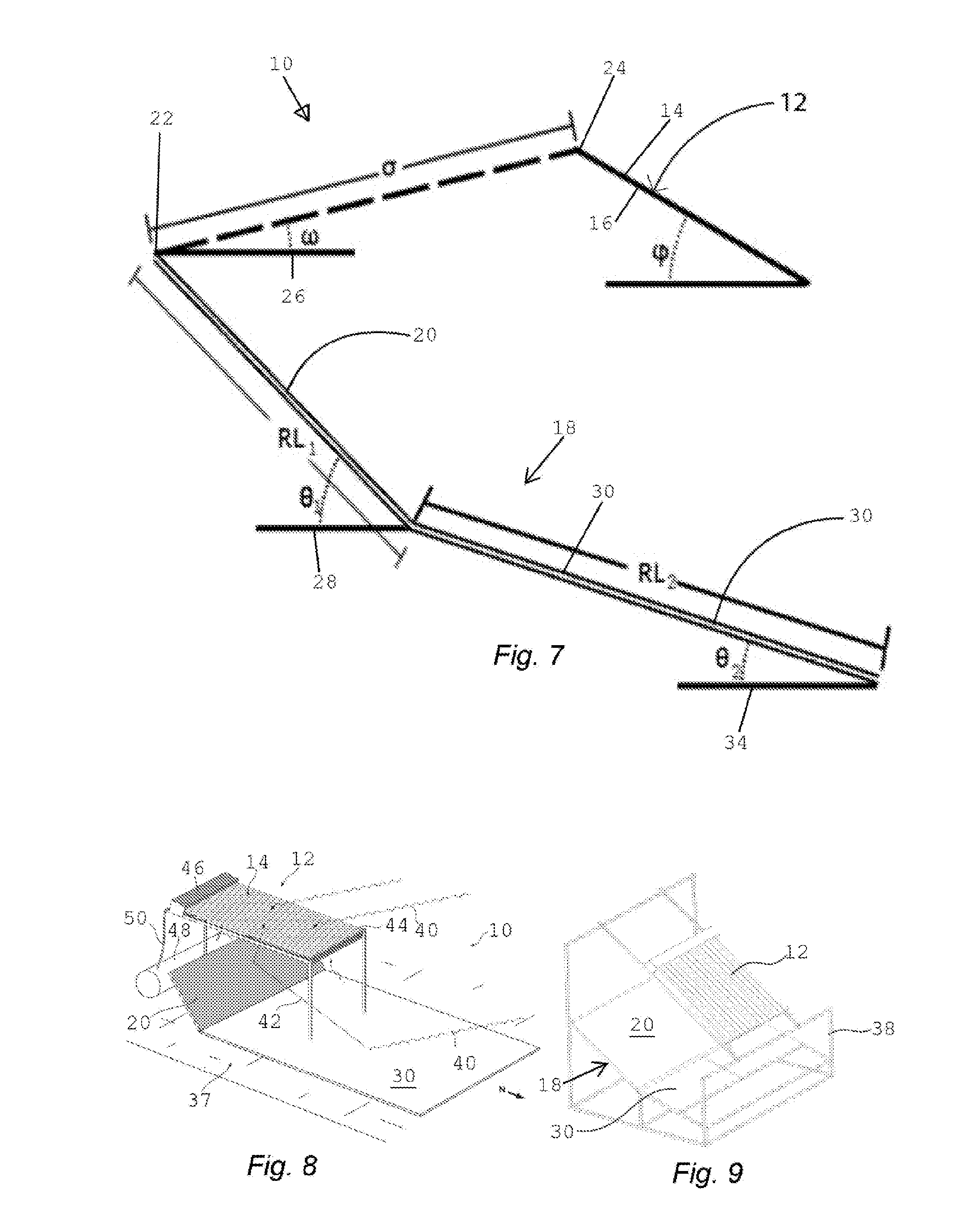Solar energy collection apparatus and design method
a solar energy and collection apparatus technology, applied in solar heat devices, lighting and heating apparatus, solar heat simulation/prediction, etc., can solve the problems of excess summer heating capacity, degraded performance of existing solar thermal collection systems, and poor performance of solar thermal collection systems. , to achieve the effect of increasing the quantum of solar energy inciden
- Summary
- Abstract
- Description
- Claims
- Application Information
AI Technical Summary
Benefits of technology
Problems solved by technology
Method used
Image
Examples
Embodiment Construction
[0064]The following detailed description of the invention refers to the accompanying drawings. Wherever possible, the same reference numbers will be used throughout the drawings and the following description to refer to the same and like parts. Dimensions of certain parts shown in the drawings may have been modified and / or exaggerated for the purposes of clarity or illustration.
[0065]It is to be understood at the outset that reference to “reflector”, “reflective surface”, “reflecting surface”, “reflective face”, “reflective portion” or “reflective panel” herein are reference to the same or like feature being a surface, panel, etc, intended to reflect radiation. Likewise, reference to “collector” or “collector panel” are reference to the same or like feature being a collection surface tube(s), device, panel(s), etc, for collecting solar radiation. Reference to “planar” herein is intended to describe a characteristic of surface that does not focus solar radiation. Reference to “un-aug...
PUM
 Login to View More
Login to View More Abstract
Description
Claims
Application Information
 Login to View More
Login to View More - R&D
- Intellectual Property
- Life Sciences
- Materials
- Tech Scout
- Unparalleled Data Quality
- Higher Quality Content
- 60% Fewer Hallucinations
Browse by: Latest US Patents, China's latest patents, Technical Efficacy Thesaurus, Application Domain, Technology Topic, Popular Technical Reports.
© 2025 PatSnap. All rights reserved.Legal|Privacy policy|Modern Slavery Act Transparency Statement|Sitemap|About US| Contact US: help@patsnap.com



